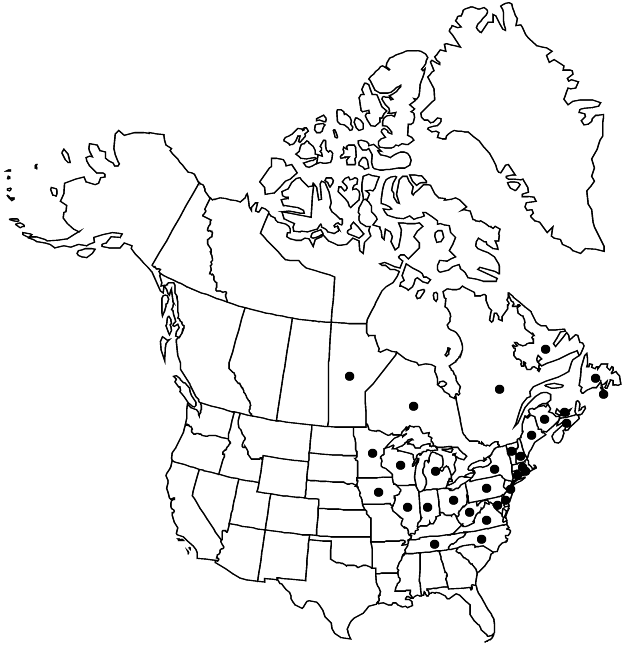Difference between revisions of "Vaccinium angustifolium"
Hort. Kew. 2: 11. 1789 ,.
FNA>Volume Importer |
FNA>Volume Importer |
(No difference)
| |
Revision as of 23:00, 16 December 2019
Plants forming dense, extensive colonies, 1–3 dm; twigs of current season green to glaucous, ± angled, glabrous or hairy. Leaves deciduous; blade dark to pale green or glaucous, elliptic to narrowly elliptic, 15–41 × (5–)6–16(–20) mm, margins usually sharply, uniformly serrate (serrations sometimes minute, tipped with stipitate gland), surfaces glabrous or hairy, especially along abaxial midvein, eglandular abaxially. Flowers: calyx green, glaucous, glabrous; corolla usually white, cylindric to urceolate, 4–6 mm; filaments ciliate; (tubules with introrse, elongate pores). Berries black or blue, rarely white, 3–12 mm diam., glabrous. Seeds (3–)10–15(–20), ca. 1.2 mm. 2n = 48.
Phenology: Flowering spring–early summer.
Habitat: Headlands, high moors, dry, sandy areas, peaty barrens, rocky outcroppings, pine barrens, oak parklands, regeneration forests, abandoned pastures and bogs
Elevation: 0-1900 m
Distribution

St. Pierre and Miquelon, Man., N.B., Nfld. and Labr., N.S., Ont., P.E.I., Que., Conn., Del., Ill., Ind., Iowa, Maine, Md., Mass., Mich., Minn., N.H., N.J., N.Y., N.C., Ohio, Pa., R.I., Tenn., Vt., Va., W.Va., Wis.
Discussion
Vaccinium angustifolium is extensively harvested from cultivated and wild plants in New England (especially Maine) and in Quebec and the Canadian Maritime Provinces.